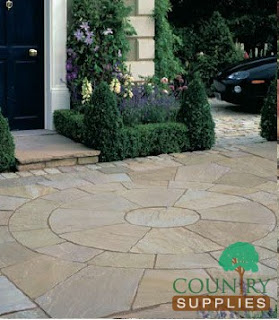Buying topsoil is not as simple as it may seem. Here we offer some advice and considerations to keep in mind when deciding what materials will suit your project best.
Topsoil is the uppermost layer of soil, which is
high in nutrients and organic matter. At Country Supplies, we stock two types of top soil; Grade A and Grade B. It can be used for making new beds, borders, raised beds or
as a base for lawns, where the natural soil is poor or non-existent.
Why buy topsoil?
You may need to buy in topsoil if the existing soil is poor,
damaged or if the space to be gardened has no natural soil, such as a
courtyard or patio garden.
Where to use topsoil
Many gardens have poor soil, such as those found behind
new-build homes, where the natural topsoil has been stripped away during
the construction process. Topsoil can be used to cover the ground, to
create new beds, borders or to provide a base for turf laying or sowing grass seed. In paved gardens where there is no access to soil, topsoil
can be used in raised beds for growing many plants, including
vegetables.
Product choice
Topsoil is generally available to buy in three different grades: premium, general-purpose grade and economy grade.
- Grade A: This can be expensive but should not bring in weed seeds. High in fertility, this loamy soil has good structure and is commonly used to build up flower borders or create new beds, while nurseries use it in compost mixes for container grown plants
- Grade B or General-purpose grade: This can be bought in differing screen size grades. Also good for making new beds or borders, or as a base for sowing new lawns. Coarser grades are particularly useful for turf laying while finer grades are good for top dressing lawns
Buying topsoil
Ask the supplier where it is coming from and whether it all has the same origin (building sites are often used as a source and the quality can be variable). If the supplier has had soil analyses undertaken request a copy. If they claim it is good and state facts and figures request these details in writing.
The following criteria (taken from BS3882: 2007 Specification for Topsoil) can be used as a guide against any analysis report a supplier offers you.
Premium grade
- pH = 5.5-7.8
- Phosphorus (P) Index min = 2
- Potassium (K) Index min = 2
- Magnesium (Mg) Index min = 1
- pH = 5.0-8.2
- Phosphorus (P) Index min = 2
- Potassium (K) Index min = 2
- Magnesium (Mg) Index min = 1
Note that imported topsoil can sometimes introduce invasive plants, such as Japanese knotweed and couch grass to the garden. Inspect the soil for signs of weed roots or shoots. Weed roots are often white and fleshy, sometimes with a brown covering, unlike the brown, dry, fibrous roots of trees and shrubs.











































